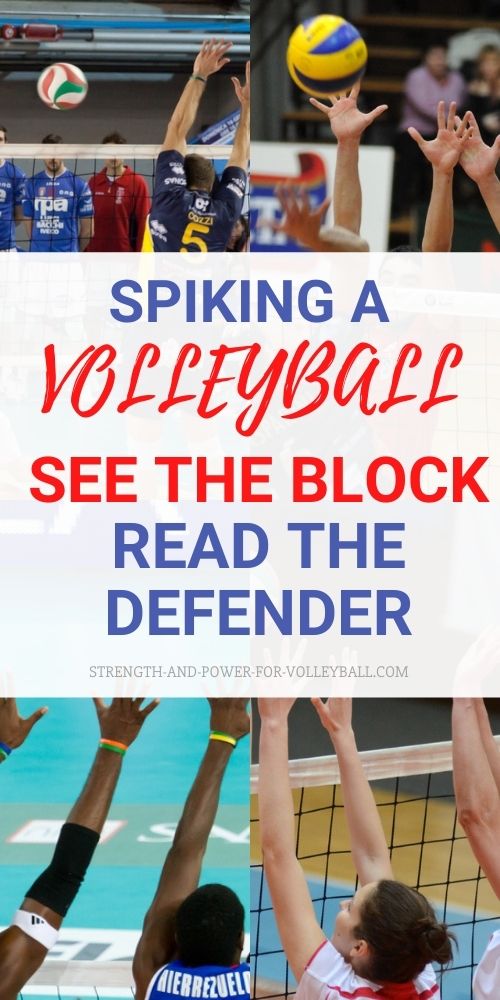How to See the Block
Spiking Tips
Before learning how to see the block, be sure to develop the correct footwork and arm-swing for spiking.
Important skills for seeing the block is the skill of using your peripheral vision.
Peripheral Vision to See the Block
Peripheral vision is the ability to focus on one object and at the same time focus on objects to the side.
So, for spiking, you need to focus on the ball, but then also see the players at the net blocking.
Even though the peripheral vision isn’t clear, you will still have enough information to make good decisions for spiking.
The first step to using your peripheral vision is to find the blocker before you start your approach. To do this, you need to look at the blocker before the ball is set. Find the blocker so that you know what to look for in your peripheral vision as you approach to spike.
A Couple Tips for Spiking Around the Block
As an outside attacker, before you start your approach, if you can see the blocker has a great distance to move to get in position to block, then you will likely have space to spike the ball down the line. You may try to place the ball between the blocker arms and the antenna.
Also, if you notice the middle blocker is slow in getting to the outside to help to block, then you know there is a hole between the two blockers.
You want to lock in on the blockers before you start your approach. This will help you see them move and help you make good decisions for spiking.
Watch the Blocker as You Are Approaching to Spike
Seeing the block as you approach is easier when the set is coming from near the net. If the set is coming from the setter from a position far off the net, it will be much harder to see the block.
When the ball is in front of you, it’s easier to see the block and the ball.
With practice, you may be able to see the block and the ball as you are about to swing to hit.
To be able to see the block effectively, the height of the set and the location of the set are important. If the set is high, it may be difficult to see the block. If the set is far off the net, it may be difficult to see the block.
What if I Can’t See the Block?
If you can’t see the blockers, the best choice is to spike the ball high and hard deep cross court.
When spiking the ball deep cross court, there is more room for error. If you spike the ball so it crosses the net high, you are less likely to get blocked because the top of the hands is the weakest part of the block. In this situation, you are more likely to have the ball rebound up high onto your side giving your team an easy chance to make a play. Also, when hitting the ball higher, there’s a chance the ball will be deflected off the blocker making it difficult for the opponent to save the ball.
Also, know what type of blocker you are up against before the serve. Know how they block. For example, does the blocker reach high when they block? Do they penetrate the net well? Are they a shorter blocker that doesn’t get up high to block? If you know they won’t be taking up a lot of space blocking, then you know you can be more aggressive with your spiking. It’s always best to take advantage of smaller blockers when you can.
If you enjoyed these tips and would like to keep it close to you at any time, just save this pin to your Pinterest Volleyball Training Board.
Volleyball › Volleyball Strategies › See the Block
